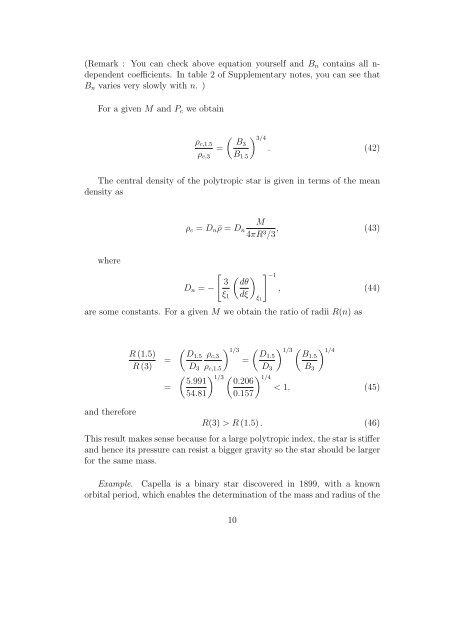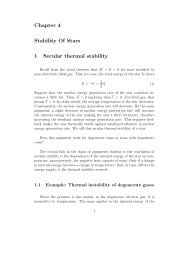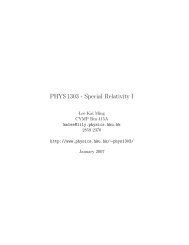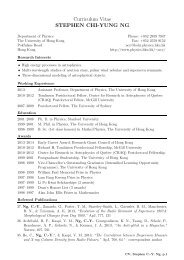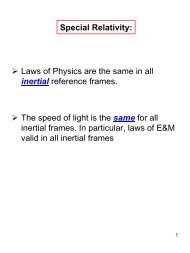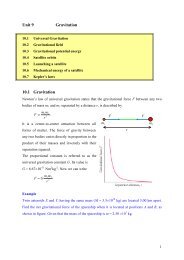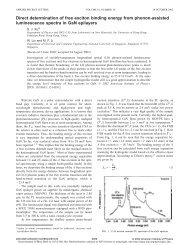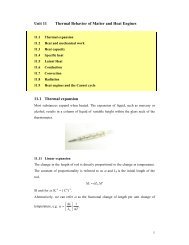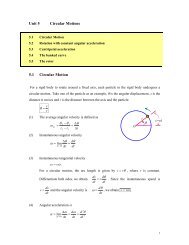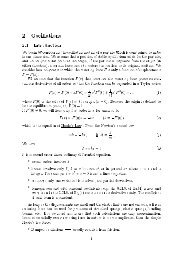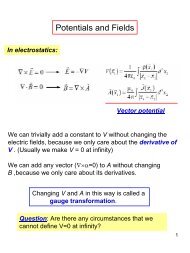Chapter 2 Stellar Structure Equations 1 Mass conservation equation
Chapter 2 Stellar Structure Equations 1 Mass conservation equation
Chapter 2 Stellar Structure Equations 1 Mass conservation equation
You also want an ePaper? Increase the reach of your titles
YUMPU automatically turns print PDFs into web optimized ePapers that Google loves.
(Remark : You can check above <strong>equation</strong> yourself and B n contains all n-<br />
dependent coefficients. In table 2 of Supplementary notes, you can see that<br />
B n varies very slowly with n. )<br />
For a given M and P c we obtain<br />
( ) 3/4<br />
ρ c,1.5 B3<br />
= . (42)<br />
ρ c,3 B 1.5<br />
The central density of the polytropic star is given in terms of the mean<br />
density as<br />
M<br />
ρ c = D n ¯ρ = D n<br />
4πR 3 /3 , (43)<br />
where<br />
[ ( ) ] −1<br />
3 dθ<br />
D n = −<br />
, (44)<br />
ξ 1 dξ<br />
ξ 1<br />
are some constants. For a given M we obtain the ratio of radii R(n) as<br />
R (1.5)<br />
R (3)<br />
=<br />
=<br />
(<br />
D1.5<br />
(<br />
D1.5<br />
) 1/3 ) 1/3 ( ) 1/4<br />
ρ c,3<br />
B1.5<br />
=<br />
D 3 ρ c,1.5 D 3 B 3<br />
( ) 1/3 ( ) 1/4 5.991 0.206<br />
< 1, (45)<br />
54.81 0.157<br />
and therefore<br />
R(3) > R (1.5) . (46)<br />
This result makes sense because for a large polytropic index, the star is stiffer<br />
and hence its pressure can resist a bigger gravity so the star should be larger<br />
for the same mass.<br />
Example. Capella is a binary star discovered in 1899, with a known<br />
orbital period, which enables the determination of the mass and radius of the<br />
10


